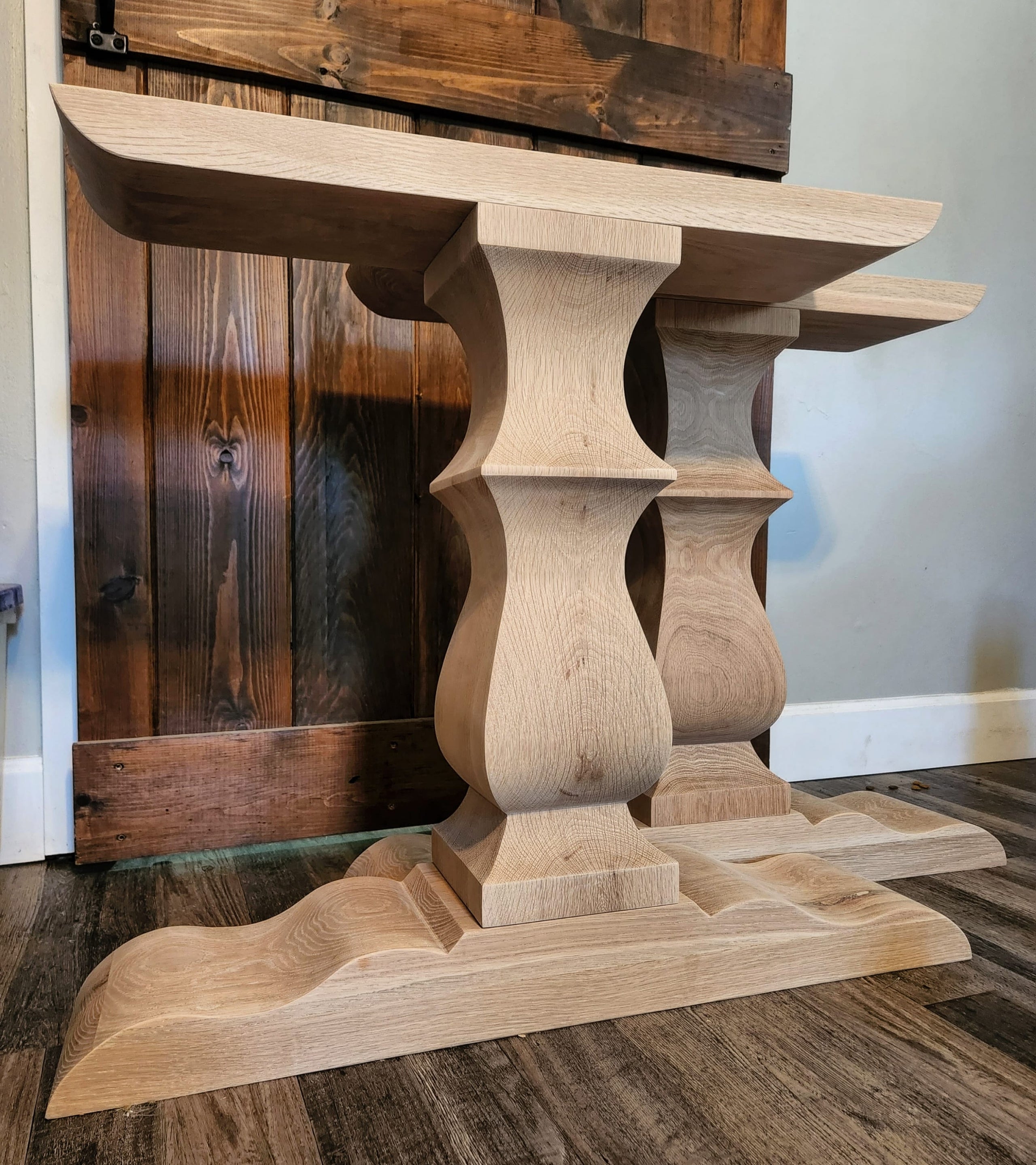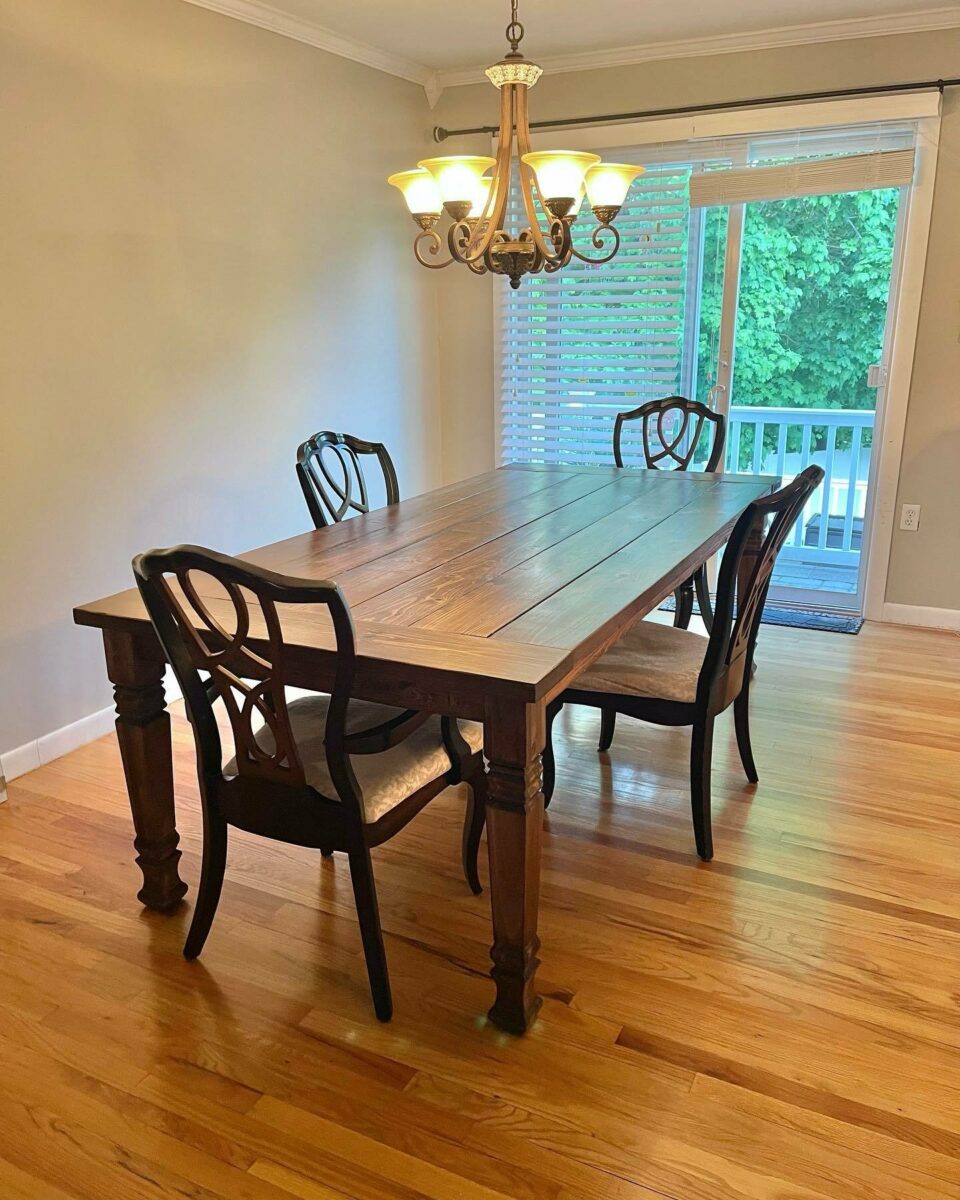Dining Room Table Legs: A Guide to Selecting the Right Style for Your Home
Dining Room Table Legs: A Guide to Selecting the Right Style for Your Home
Blog Article
Specialist Tips for Putting Up Eating Area Table Legs for Optimum Security
When it comes to mounting eating area table legs, achieving optimum security is vital for both functionality and appearances. What particular strategies can boost stability even better?
Choose the Right Legs
When choosing the proper legs for your dining-room table, it is important to consider both performance and appearances. The legs you choose will substantially impact the overall layout and security of the table. Evaluate the table's meant usage; if you anticipate frequent celebrations, tougher legs, such as those made from solid wood or metal, might be a lot more ideal, as they supply increased sturdiness and assistance.
Next, think about the elevation and style of the legs in regard to the tabletop. Conventional dining tables usually range from 28 to 30 inches in elevation, so make certain the legs straighten with this standard for convenience. The design of the legs must enhance the layout of the table top-- whether it be modern-day, rustic, or standard. As an example, tapered legs can include a contemporary touch, while transformed legs might share an extra classic aesthetic.

Select Appropriate Hardware
Exactly how can the right equipment improve the security and long life of your dining space table? The choice of proper hardware is critical to ensuring that the legs of your table are securely connected and able to stand up to normal usage. High-quality screws, screws, and braces give the needed stamina to support the weight of the table, in addition to any type of extra lots put upon it during celebrations or dishes.
When choosing screws, choose for those made from long lasting products such as stainless-steel or brass, which resist corrosion and maintain integrity in time. The length of the screws is just as vital; they should penetrate deeply into the table's structure without jeopardizing honesty. For bolted links, consider using lock washers to stop loosening up because of vibration or motion.
In addition, making use of edge brackets can include additional support, especially for bigger tables or those with larger tops. These brackets distribute weight equally and aid keep the table's form. Making sure that the hardware you select is ideal for the certain materials of your table will certainly better improve its general stability and long life, permitting you to appreciate your dining experience for many years to find.
Ensure Proper Placement
Proper alignment of eating space table legs is vital for both aesthetic appeal and functional stability. Misaligned legs can lead to an irregular table top, which might not just be aesthetically uninviting yet additionally endanger the table's use. To accomplish optimal positioning, begin by gauging the distance from the table's edges to the leg attachment factors. This guarantees that each leg is positioned equidistant from the edges, developing a balanced appearance.
Make use of a level during setup to confirm that each leg is vertical to the table top. It is suggested to mark the desired leg positions on the underside of the table with a pencil or masking tape before protecting them.
Additionally, verify the placement after the initial screws are tightened, as adjustments may be necessary before fully securing the hardware. By prioritizing proper alignment, you not just enhance the table's overall layout yet additionally ensure that it stays practical and secure for many years to come.

Consider Weight Circulation
After making sure proper positioning of the dining-room table legs, it is essential to think about weight distribution to boost stability and functionality. dining room table legs. Correct weight circulation is important in avoiding tottering and making sure that the table can support its intended lots without risk of tipping or falling down
When positioning the legs, ensure they are put at equal ranges from the center of the table to equally disperse the weight across the framework. Consider the weight of the table top and any things that will regularly hinge on it, such as tabletop appliances or attractive pieces. Tables with much heavier surfaces must ideally have legs positioned closer to the corners, as this optimizes the base of support and lessens the risk of instability.
Furthermore, if the table is intended for usage in a high-traffic area, think about using larger products for the legs or adding supporting components, such you can find out more as cross-bracing or a lower shelf - dining room table legs. These changes can help preserve equilibrium and avoid changing throughout use. Eventually, a well-considered weight circulation strategy will substantially boost the table's overall performance, guaranteeing it continues to be a functional and attractive centerpiece for your dining room
Test Stability Before Use
Checking the stability of the dining space table prior to usage is a vital action that should not be forgotten. Guaranteeing that the table is safe and secure can prevent accidents and prolong the life-span of the furniture. Begin by using gentle pressure to different points on the table surface. Push down on the center and then along the edges, shifting or observing any wobbling. Recognize the legs or joints that might need modification. if the table shows instability.
Next, check that all bolts and screws are tightened properly. Loosened links can result in instability and potential damages gradually. If required, use wood adhesive on joints to improve stability, ensuring to allow ample drying out time.

Verdict
In final thought, the installment of dining-room table legs calls for cautious factor to consider of products, alignment, weight, and hardware circulation to achieve optimum stability. By picking strong legs and high-quality fasteners, making certain precise positioning, and dispersing weight equally, the architectural integrity of the table can be considerably improved. Carrying out a stability examination before normal usage better guarantees that the table will certainly stand up to day-to-day stress, therefore providing a trustworthy and secure dining experience.
When it comes to setting up eating area table legs, attaining maximum stability is vital for both capability and visual appeals. The legs you pick will considerably affect the total layout and stability of the table (dining room table legs). Common eating tables generally vary from 28 to 30 inches in elevation, so make certain the legs straighten with this criterion for convenience.Appropriate positioning of dining area table legs is crucial for both this page visual charm and practical stability.In conclusion, the installment of eating space table legs requires careful consideration of products, placement, equipment, and weight distribution to attain maximum stability
Report this page